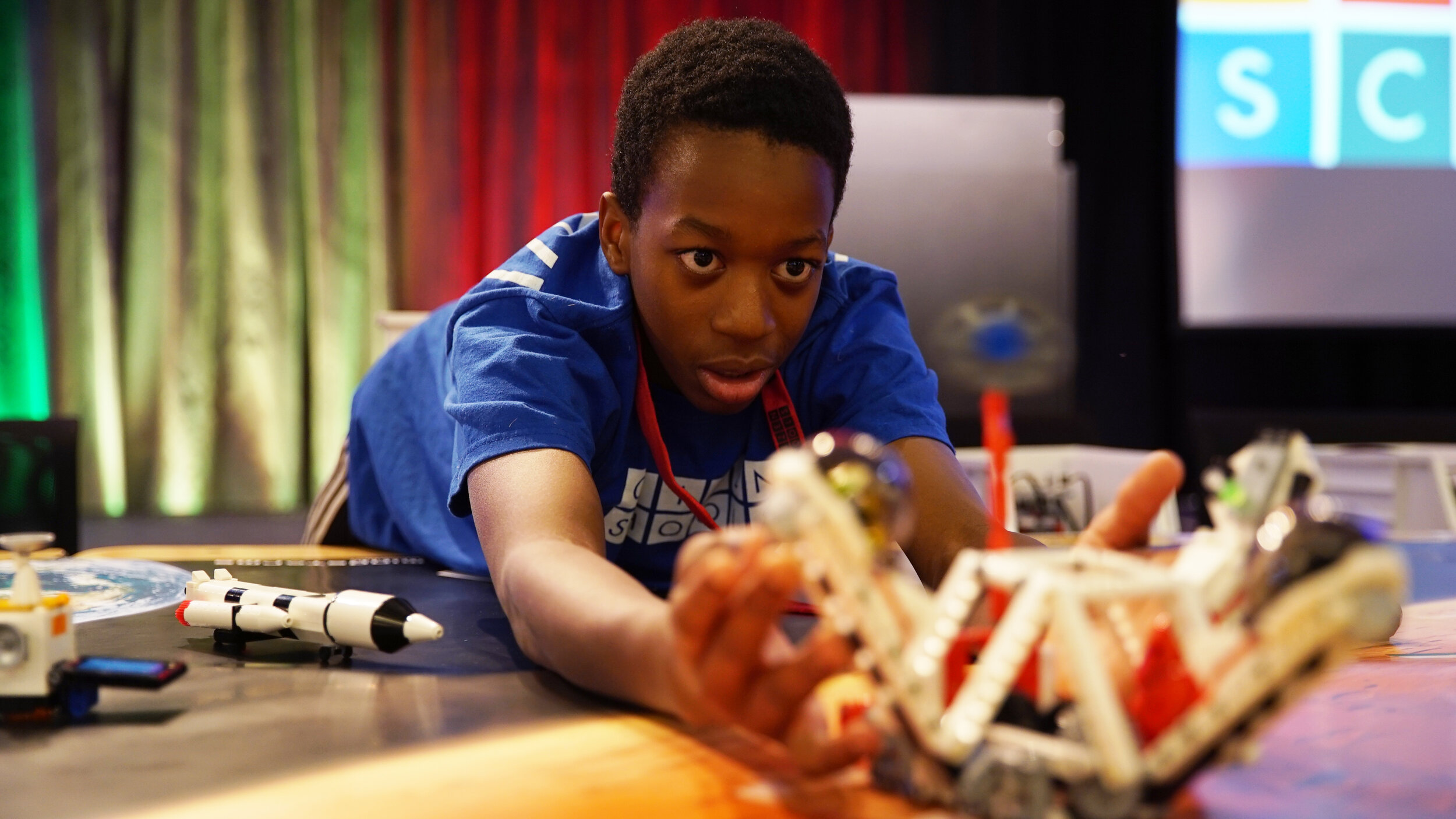Making Lasting Meaning: The power of crosscutting concepts in middle school Science, Technology and Engineering
In Catalyst, industry volunteers work side-by-side with middle school science and technology teachers to help students develop work products that demonstrate their understanding of disciplinary knowledge AND crosscutting concepts.
What is a crosscutting concept? “Crosscutting concepts have application across all domains of science. As such, they are a way of linking the different domains of science. They include patterns; cause and effect; scale, proportion, and quantity; systems and system models; energy and matter; structure and function; and stability and change.” (Next Generation Science Standards)
These organizing concepts help create meaning for students beyond any one project or investigation in their science class, and at Citizen Schools they help us identify guiding questions in our project based learning units that help students meet the demands of rigorous NGSS.
“The new standards require a significant shift in the way science is taught. Instead of memorizing facts and terms, the Next Generation Science Standards emphasize hands-on science projects that require students to investigate, collect and use data, and give evidence-based explanations for what they discover. The new standards also integrate several scientific disciplines and encourage teachers to base lessons on students’ questions and scientific experiences they might encounter in their everyday lives.”
Unfortunately, access to high quality Instructional materials and professional development to support teachers’ transition toward this more rigorous set of integrated expectations has not been equitably distributed.
Catalyst supports teachers to tackle project-based learning instruction with planning support and connection from industry volunteers. One teacher who taught our Metabolism unit explained, “My students were really engaged in the project from beginning to end. The project brought out creativity that I have never seen before. Not only were the students engaged; but they were able to work with others, who aren't necessarily like them, to complete their videos and models. The project reached students on all academic levels. My volunteers also helped out tremendously; whether it was giving a helping hand by holding cameras; giving feedback during research or modeling, or just connecting with the students.”
This spring, Catalyst teachers in NYC are preparing to guide students to apply their understanding of healthy metabolism to an example of an individual who has a disorder like Type 1 diabetes. As students develop ideas for a video, they will work in teams to describe the mechanisms and pathology of the disorder they research. To prepare the script for their video, students will clarify their thinking using a cause and effect graphic organizer. This chart captures students' ideas and will help ensure that students are translanging their research on the causes of the disease and can draw the connection to how their selected disease creates difficulty symptoms for individuals who have the disorder.
In March, 6th graders at Concord Lake STEAM Academy will work with volunteers from the Climate Reality Project, a nonprofit focused on climate education, on the Climate Science unit which focuses on the crosscutting concept of stability and change. For both designed and natural systems, like global climate and weather and beyond, conditions that affect stability and factors that control rates of change are critical elements to consider and understand. Not only are students required to apply what they have learned about weather and climate, they are also applying engineering design skills to ensure that the process they are using to develop possible solutions to the human impacts of severe weather. In our Climate Science unit, students select a community/city and research the most likely types of severe weather due to climate change. Students create and iterate on a prototype of a tool or technology to reduce the effects of severe weather for people in the chosen community.
STEM mentors are well prepared to support students' understanding of crosscutting concepts. Industry mentors from companies and institutions of higher education are incredible thought partners for students as they begin to move from specific conceptual understanding to building context on how their science learning fits into the bigger picture in science. Volunteers can remind students of the ways the concepts fit into research, work or real world problems.

